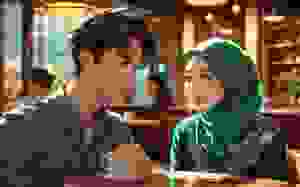Important To Understand Beyond Names And Labels

“WHAT’S in a name? That which we call a rose by any other name would smell just as sweet”. That was written by William Shakespeare 430 years ago. I did not study literature in school or read Shakespeare, but some of his famous lines kept popping up over the past decades.
It was only when I turned 60 in 2010 and started writing to newspapers and later news websites, after realising the importance of writing, which helps to crystallise my thoughts and ideas, and share with many others if published.
To do that, I had to look at things critically and not accept superficial or misleading information without question. Otherwise, it will be ‘garbage in garbage out’ (GIGO). Hence, I continue to write regularly to correct what I think is inaccurate, and express my views for public scrutiny.
It is not my duty or responsibility to look at issues deeply and address them fully. What I share is usually interesting, as it is from my own perspective, and not common opinions or contents posted online or printed in books.
Recently, Machang MP Wan Ahmad Fayhsal Wan Ahmad Kamal wrote “Rafflesia and the battle for intellectual freedom” to defend his call to rename a rare flower.
He was responding to an earlier article “Don pans MP’s ‘embarrassing’ call to rename Rafflesia”.
The flower has various local names. In Kelantan, it is called bunga Pokma but at Lojing Highlands in the same state, the Temiar Orang Asli called it bunga Malang. To the southern Thai Malays, it is bunga Kekmo. In Sabah, it is bunga Patma by the Kadazan-Dusun.
This stinking corpse lily is in the family of Rafflesiaceae that has 41 species. The first European who learned about this genus of plants was a Frenchman in 1791, and the first British in 1818 in Sumatra. The genus was renamed after Stamford Raffles, the ‘founder’ of Singapore.
Just like Christopher Columbus who was credited to have ‘discovered’ America, Stamford Raffles is recognised as the ‘founder’ of Singapore.
What Columbus did was try to find a western route to Asia but landed on an island in the Bahamas, thinking he had reached the East Indies or the Malay Archipelago.
He was an Italian and real name Cristoforo Colombo. After gaining sponsorship from the Spanish ruler, he sailed from there in three boats, ranging from 15 to 18 meters in length.
After four months, he reached terra firma and landed on a small island, then sailed to Cuba and established a settlement at Hispanioala, leaving 39 crew members there to build a fort.
Columbus thought he had reached India and called the natives there Indians, and the name is stuck ever since, including for North American Indians, and those that dyed themselves with red ochre as Red Indians.
As a European, he may have discovered ‘America’, with a landmass much bigger than Europe. To the natives, they learned he is very different from them and came with others in slightly bigger boats. The discovery was a two-way street, not one-way as most people perceived.
The history I learned in school (1957-1967) was largely written by the British. For example, Penang was founded by Captain Francis Light in 1786 and Singapore by Stamford Raffles in 1819. What they did was establish two British trading posts along the Malacca Straits.
As for Kuala Lumpur, there are three contenders for its founding. They are Sultan Puasa, a Mandailing nobleman who first established a trading post, Raja Abdullah who commissioned the first Chinese tin miners there in 1857, and Yap Ah Loy who led the growth of Kuala Lumpur.
For local places, individual nations have the right to rename their countries, states and territories. For example, Burma was changed to Myanmar, Turkey spelled as Turkiye, Malacca spelled as Melaka, and Prang Besar estate transformed into Putrajaya.
At one time, it was fashionable to dress up the names of states in peninsular Malaysia by adding Darul this and Darul that, but it seems to have been dropped and forgotten in recent years.
But renaming Rafflesia is laughable. Which local name will be picked? If so, it will negate years of promotional efforts by Tourism Malaysia that deep in our mysterious jungles, the biggest flower in the world may bloom unexpectedly, and now, we try to erase the name overnight.
The flower has no other commercial value and is seldom seen. Even if spotted, it would be better for visitors to stay away.
In the 1950s for example, 10,000 giant leatherback turtles came ashore annually to lay eggs in Rantau Abang beach in Terengganu. Today, there are hardly any.
In any case, the flower will still be known as the Rafflesia internationally, just as animal and plant species will retain their common and scientific names globally.
So, what purpose does it serve to rename Rafflesia, other than politicians bankrupt of ideas use it to score brownie points?
YS Chan is master trainer for Mesra Malaysia and Travel and Tours Enhancement Course and an Asean Tourism Master Trainer. He is also a tourism and transport business consultant.
The views expressed are solely of the author and do not necessarily reflect those of MMKtT.
- Focus Malaysia.
Artikel ini hanyalah simpanan cache dari url asal penulis yang berkebarangkalian sudah terlalu lama atau sudah dibuang :
http://malaysiansmustknowthetruth.blogspot.com/2025/08/important-to-understand-beyond-names.html
 PING BABAB : Raksasa Aggregator Malaysia
PING BABAB : Raksasa Aggregator Malaysia



























